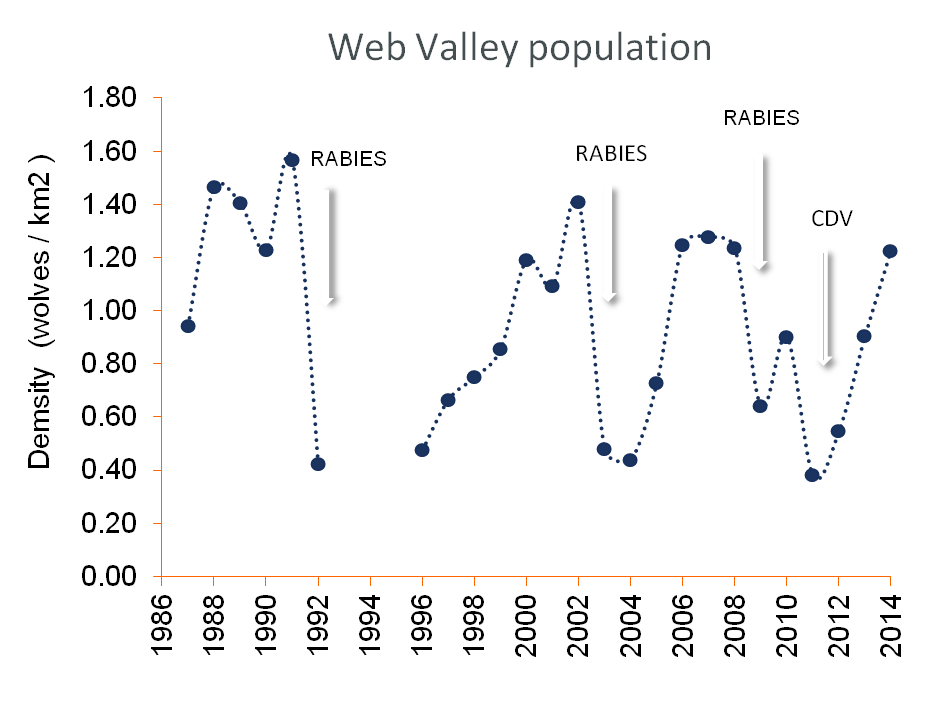

Follow the fate of Ethiopian wolves in the Bale Mountains, with a long-term perspective

The long-term perspective
Every year, intense monitoring by the EWCP Wolf Monitors provide an exceptionally detailed picture of the lives of many wolf families in the Bale Mountains National Park. Close observations of selected focal packs enable us to establish with certainty the age and sex composition of packs and the breeding success . When compared with that from the previous season, this allows us to know if the populations increased, decreased or remained stable. Such intense level of observations also reveals more rare occurrences such as packs going extinct or new ones being created.
Ethiopian wolf numbers in the Bale Mountains, home to over half of the global population of this endangered carnivore, are fluid due to heavy disease pressures. The long-term moniroing by EWCP acts as an early alert system for epizootics while producing critical demographic information to guide vaccination interventions to contain the disease. Without such actions, it is unlikely that the overall population would be as healthy as it is currently, given the recurrent disease outbreaks it is exposed to. The monitoring activities implemented by EWCP since its inception have resulted in the Ethiopian wolf becoming one of the best studied and most well-known wildlife species within Ethiopia, receiving the highest level of conservation attention of any of the country’s endemics.
Persistent threats & conservation needs
The bottom line is that the rapidly increasing human and dog populations in Bale over the past decade have made the task of eradicating rabies through dog vaccinations alone impossible. In view of the success of past interventions, the vaccination of Ethiopian wolves against rabies and CDV is now considered a priority in the Strategic Plan for the Conservation of Ethiopian Wolves, developed and supported by the Ethiopian government, NGOs and conservation specialists.
EWCP is currently testing the effectiveness of oral rabies vaccines to protect wolves and dogs from disease. Vaccinating only a proportion of the wolf population would ensure their persistence in the face of the continuous exposure to diseases transmitted by dogs.
Wolves in Bale are also threatened by the continuing loss of habitat, habitat degradation and fragmentation. Monitoring since 1987 shows that livestock numbers within the park are increasing and affecting new areas. Additionally, habitat isolation has contributed to the local extinction of wolves in the Gaysay valley last year. Human expansion into wolf areas will have to be controlled if the wolves are to stand a chance of survival.